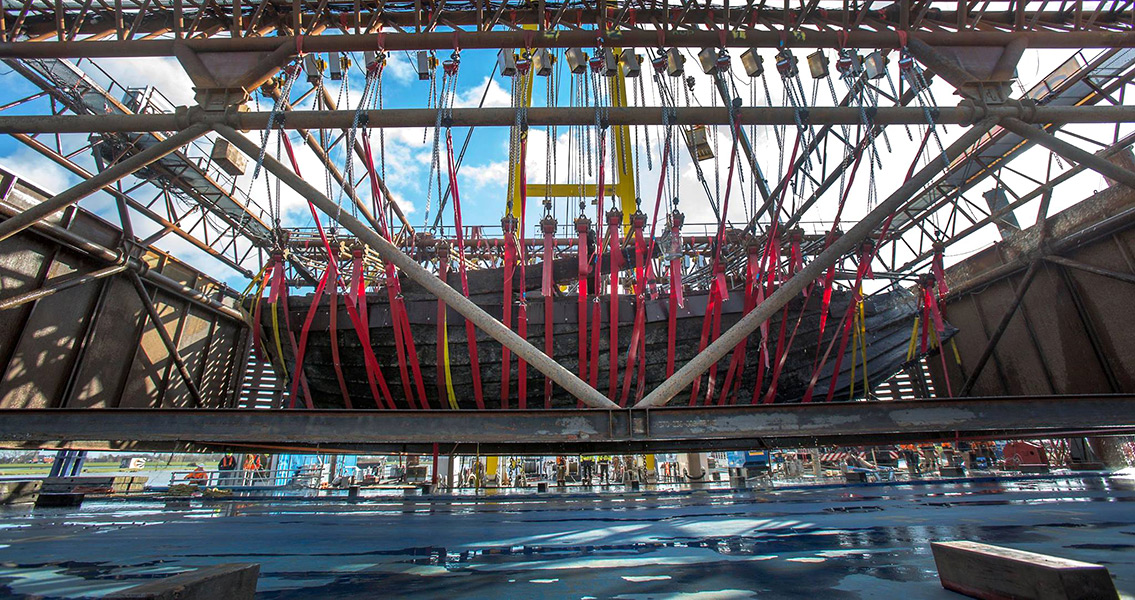<![CDATA[A wooden ship likely to have been deliberately sunk in a Dutch river to alter its flow more than 600 years ago has been successfully raised by a team of archaeologists. The Ijssel River, a tributary of the legendary Rhine, harbored the flat-bottomed, wooden ship for centuries until it was discovered in 2012 during efforts to widen the river’s flow. The type of ship, a trading vessel known as a cog, was found alongside two other medieval-era ships, with signs that they had been scuttled on purpose by some long-ago band of medieval maritime engineers to control the Ijssel’s flow. What followed was a three-year effort to recover the ancient cog from the bottom of the riverbed, one that culminated with the vessel being raised completely in just one attempt. The planning efforts required a crane and a platform to be constructed on the Ijssel, followed by a framework erected around the wreck while it still languished on the seabed. Finally, after removing silt, debris, and other detritus from around the cog while still underwater, marine archaeologists created a detailed 3D image of the ship. Based on this data, a series of jacks, crossbeams, and straps were woven underneath the hull of the cog and networked together to raise the ship slowly and carefully without damaging it. Weighing upwards of 55 tons, the cog was fitted with a straight, steep prow and would have had deck beams that protruded from its skin. Typically used for international trade, cogs were common during the Late Middle Ages, especially during the heyday of the Hanseatic League, the collection of international Continental trade guilds that dominated commerce during the time. While the majority of the vessel was built from wood, nails used in its construction and other structural supports for the cog were found to be made out of metal. This aided in its recovery from the riverbed. Marine archaeologists believe that they have solved the mystery behind the cog’s sinking in the river, based on their analysis of historical documents and contemporary maps that charted the path of the Ijssel River as it would have appeared several hundred years ago. According to the findings, the river was experiencing a buildup of silt at the time, creating massive sandbanks that interfered with the ability of ships to dock; the cog and the two ships that were found alongside it may have been sunk in an attempt to either divert the river or narrow its flow to ameliorate the effect of this silt buildup and thus make it easier for the Ijssel to be used for commerce and travel once more. The ship, which still bears telltale marks of opulence such as glazed tiles and a brick oven in its galley despite being stripped and sunken, will be painstakingly dried out prior to being put on display in a museum. Image courtesy of Rijkswaterstaat, The Netherlands ]]>
Medieval-Era Ship Raised from Dutch Riverbed
